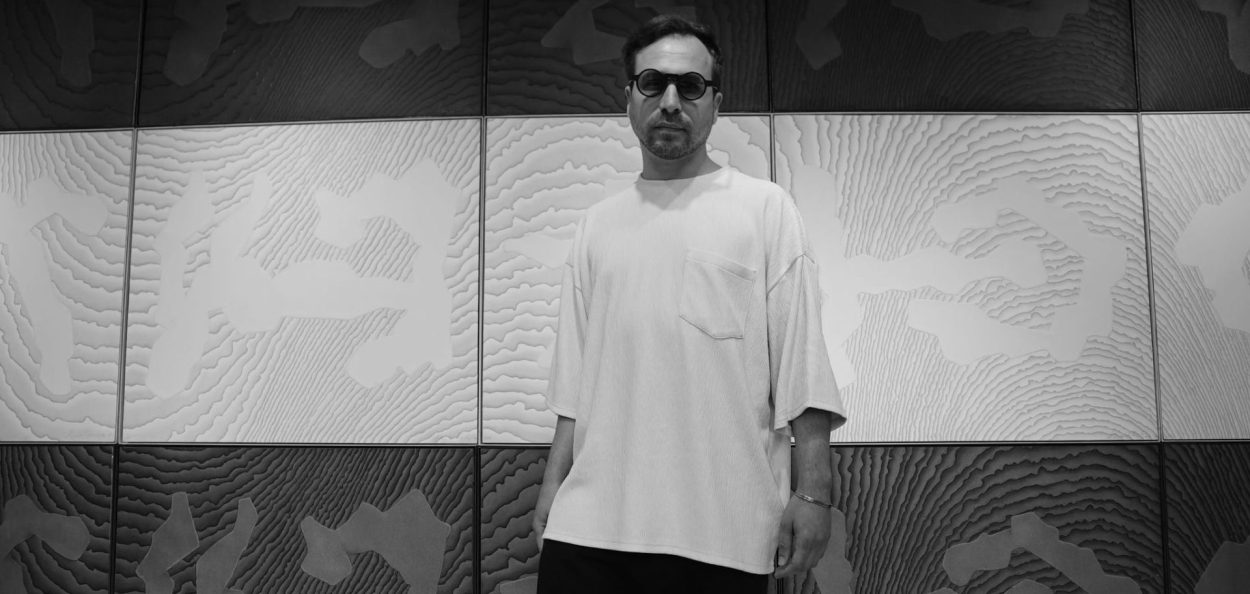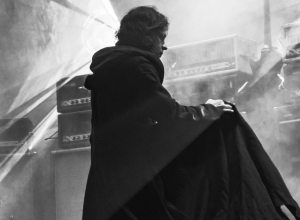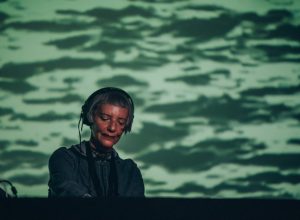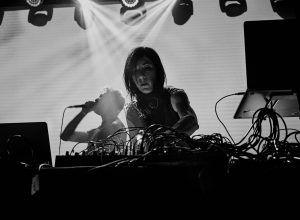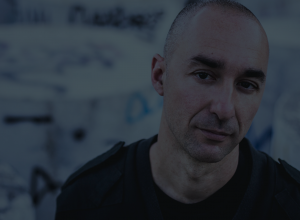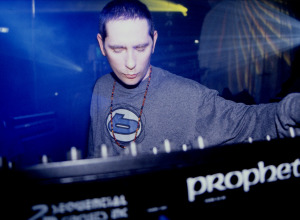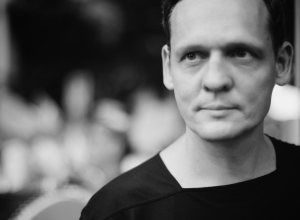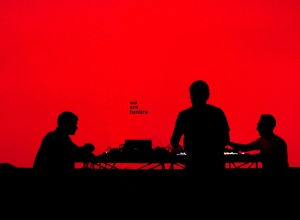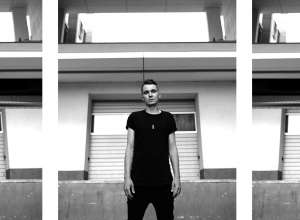Hailing from Italy, Neel’s artistic career spans decades, marked by a pursuit of innovation and a profound commitment to pushing the boundaries of electronic music. Beginning amidst the underground scene of Rome, Neel quickly garnered attention for his distinctive sound and uncompromising approach to music production. Drawing inspiration from a diverse array of influences, ranging from the raw energy of techno to the ethereal depth of ambient music.
From his groundbreaking solo productions to his collaborative endeavors as one half of Voices From The Lake and running the Spazio Disponibile imprint, Neel’s every release is a testament to his unwavering dedication to his craft, as he seeks to challenge conventions and defy expectations with every composition. With a keen focus on groove and texture, Neel crafts immersive soundscapes, inviting listeners to explore and be challenged through his sounds.
In an exclusive interview ahead of his performance at this year’s edition of the Waking Life—taking place at the shimmering lakeside edge of Crato in Portugal from June 19th through 24th—Neel offers a glimpse into his work, the interplay between rhythm and texture in his music, and the profound influence of collaboration on his artistic vision as well as his latest projects.
Your productions often showcase a balance between rhythmic propulsion and atmospheric depth. How do you approach this interplay between groove and texture, and what role does each element play in your compositions?
Neel: Yes, it is true that these two factors play an essential role in all my productions and the approach I have, it starts from a very simple concept initially. Texture is the territory where I want to take my production at that moment. It is very rare today or even in recent years that when I produce techno I build my textures based on melodic sounds or pads and so on, I always try to do them in an unconventional way, they can come to me from the feedback of some processed sounds or very often they are the same sounds of the structure that generate harmonies or in any case organic elements that close the circle.
It looks difficult to explain, but for me, it’s actually very simple to do, imagine creating a groove where then working on it, and processing it many times you can bring out other elements and even atmospheres, all this makes for an extremely organic production. I think one of the results of which I am very satisfied was the EP on Non Series which was based solely on a Drum machine.
How does creating music serve as a means of personal exploration or communication for you?
N: So they are two extremely linked factors. As far as personal exploration is concerned, it is very rare that I make a record composed of tracks made in single moments. I always start from a concept, all tracks of an EP or an album are born from that concept. So as happened for example in the past for my records on TOKEN, the first was inspired by a village near Rome called Calcata, based on field recordings made on site, and the second instead was based on the study of transition elements in chemistry. As a science enthusiast, I like to combine these aspects based on scientific exploration with music.
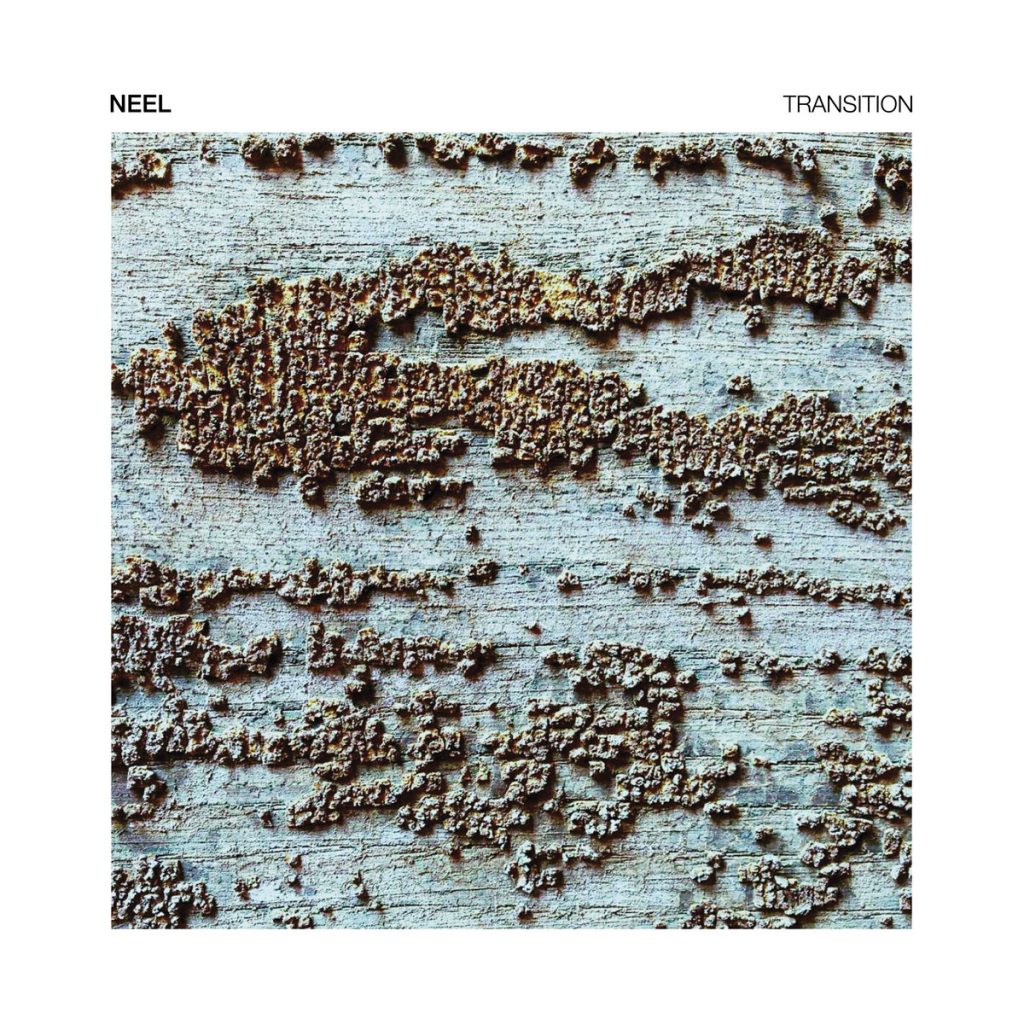
All this leads me to open my mind a lot. This is just an example, in addition to my passion for science, my daily life, life experiences and even a bit of romance are a strong inspiration. I like to take the listener where the music I have produced has taken me, to get away from everything a little. The same thing happens when I perform as a DJ, the components of psychedelia, acid, tribal, and the purest and most truthful techno are always present.
Collaboration seems to be a recurring theme in your career. How does collaborating with other artists influence your creative process, and what do you look for in potential collaborators?
N: Collaborations have always arisen spontaneously. I think in an artistic journey there are two very important things, I say this based on my experience, one is collaboration, and the other is the listening approach. These two things are also very linked to each other, the collaboration leads you to open up and move away from your own modus operandi and embrace the one of another person, many objects of discussion between the two can become excellent ideas.
We must consider that a phase of a creative process that may be right for one may not be right for the other one. So the meeting points lead them to broader creative visions and it is also very important to have a positive approach. In my opinion what is said above is the right way to approach these experiences, a true collaboration cannot fail to work, for a simple reason, if you collaborate with another artist it means that you feel a connection with him, and it is quite clear.
The other factor is listening, which is essential in a collaboration, we must always try to understand what the other’s idea and vision is, only in this way will we find the starting point and lay the foundation for something beautiful.
Continuing on the collaboration aspect, Voices From The Lake has been your longest ongoing collaborative project. How do you and Donato Dozzy approach it, and what makes your partnership special?
N: VFTL is more than a collaboration, VFTL is a part of life, born from a strong friendship. I met Donato when I was really young, the passion for music linked us a lot. All this has led us over the years to spend a lot of time together and do what we love most, making music.
We have always composed music in the most natural way possible, if you love spending time with a person, and the person in question is your collaborator, this leads you to be more spontaneous in producing. We composed the music mainly for ourselves, many times we think about what we did in the past, the times we were always together, times that unfortunately will never return, not by choice, but because times have changed, we have become older, there are many more commitments and everything is a little different, but when we remember all those moments with pleasure we become a bit nostalgic.
However, we have resumed the project and we are writing the new album, when we see each other and spend 3, 4, or 5 days just the two of us, we enter our bubble and all the magic returns. In short, we never lost each other!
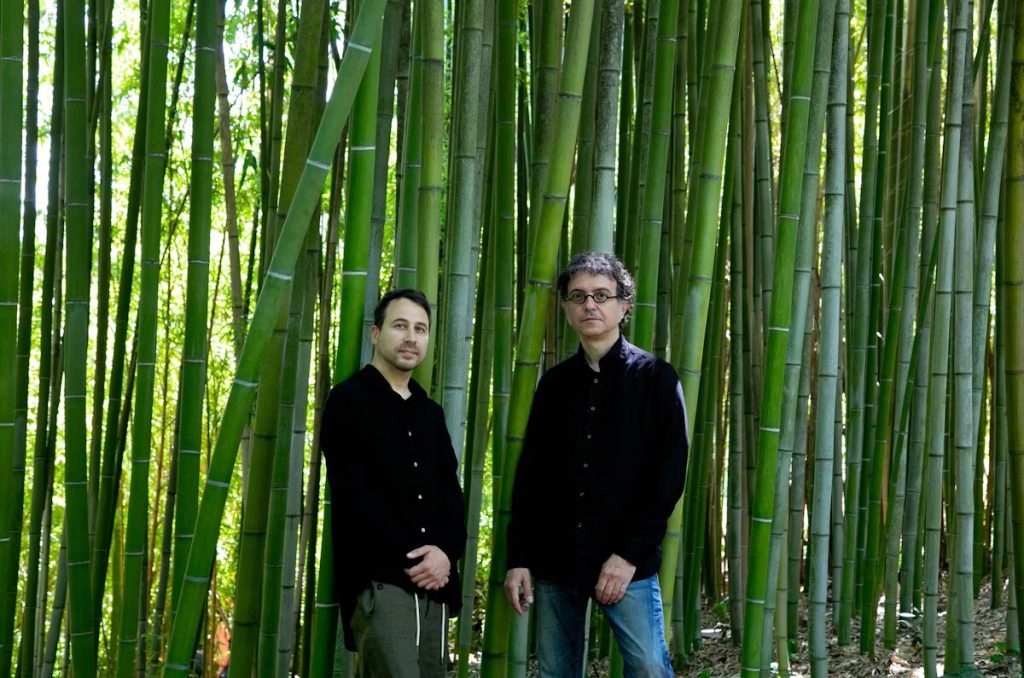
What are the key inspirations behind your solo productions, and how do they differ from your work with other producers?
N: As I was saying before, the inspirations for my solo projects are especially concepts of a more scientific nature or linked to space and celestial bodies or they come from life’s experience. It is the concept that guides me in production, I like to transform a story or anything that I am particularly interested in at that moment into music.
I don’t make music and then later give it meaning based on where the music itself takes me. I don’t know how different I am from others, or even less so, it’s not me who has to say, that is, I’m not tied to a musical style.
My latest work on IT is a record made up of 5 tracks of different natures but with a common thread. I don’t like doing just one thing, I like to make music in all the ways I can and that I love, the idea of putting myself in just one role is restrictive for me. I like feeling free to express myself as I want, from ambient to techno. The thought that if you have made productions, and those ones are very well known and appreciated, does not mean that your research or your music ends there, I have always made and played techno, as I have always played deep or ambient, and I will continue to do so, but the fact that sometimes I feel that artistically people linked me to one side only, it’s annoying.
Personally, I always find my style in everything I do. I don’t like to label myself or structure everything too much. I’m not at all the person who gives himself a different artist name for every different artistic project. It’s always me in the end, people just have to concentrate on listening, and the rest is bullshit. I know what I have to deliver once on stage.
Your live performances are renowned for their immersive and hypnotic qualities. Can you walk us through your approach to crafting a live set, and how you adapt your performance to different environments and audiences?
N: My Live performance’s approach is something that changes often, almost continuously and the factors that make it change are also many. Let’s say we can start from a more classic side which could be the fact that by changing instruments or setups, your approach and the way you perform change too.
Leaving aside the technical side, I think the most important factor is linked to everything that is around the performance, the context, the people, the time, the weather and so on. For me it is also important to know who plays before and after me. I think that every act is part of a journey, I don’t go on stage and I just do my thing, I like to be part of a broader journey, where each artist does their part.
Obviously, this is not always the case, for example, there are situations, festivals where you arrive and you have to do your thing and give your best out, in a festival almost always every act is a peak time one. In terms of music, my techno live shows always contain 4 fundamental keys, groove, tribalism, psychedelia and a good dose of acid sound. The hypnotism defined by many is what I instead call psychedelia.
Your latest project, Pluto v.1, embraces quadraphonic sound and delves into ambient experimental realms. Can you tell us more about it?
N: Pluto was an idea that I had for some time after making Phobos in 2014, but I had never found the time to do it. Phobos is the result of a lot of patience, it was a project developed over two years, it was not something easy to listen to, nor something easy to make.
I started writing some thoughts about Pluto in 2020, during the first COVID but then everything stopped, and I saved some sketch notes thrown there. The request from InnerSpace rekindled everything. I therefore decided to carry the concept forward, the particular thing is the creative process of Pluto is the opposite of Phobos.
While Phobos was a studio album it was made entirely in the studio, therefore using everything I could have and when I couldn’t create the sound design I wanted through my synths or modulars. I created the instrument, then I recorded everything I could use as a source for creating the textures I had in mind. Once composed, I adapted it to play it live.
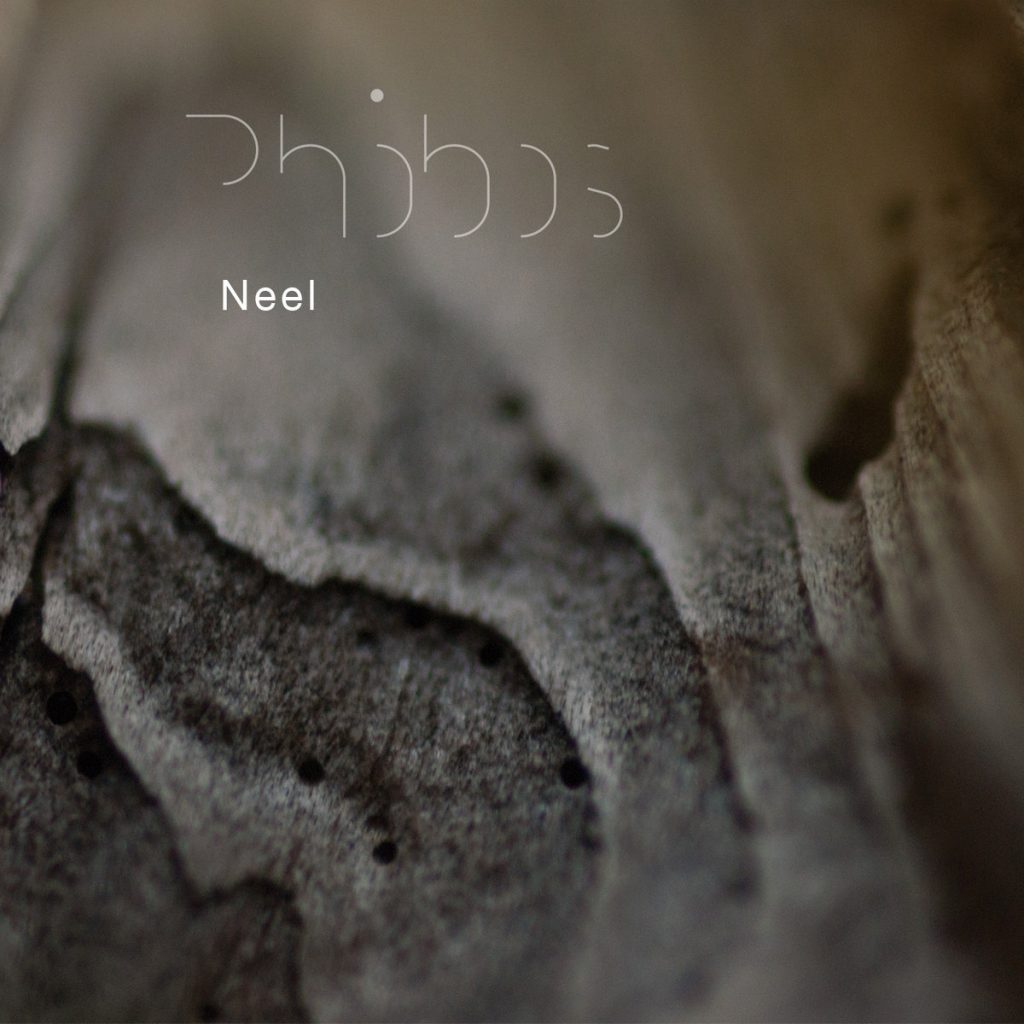
Pluto, on the other hand, was born the other way around, it was supposed to be born as a quadraphonic live performance, which led me to not use my entire studio but to carefully choose the instruments/modules with which to perform and create it. It was a great challenge especially due to the complexity of the sound design.
As the first live act, I would say that it was a success with great participation, I consider this live the Beta version, and I already know how to develop it further and how to later transform it into a studio album. The Pluto works concern my personal world, my research on outer space, for me these moments of creation are magical, in the studio time stops and I would never want to leave from there.
Looking ahead, what future projects or collaborations can we expect from you, and how do you envision your music unfolding in the coming years?
N: Yes, there are a few future projects, let’s say apart from the fact that in a couple of weeks, Disco Quarantine, will be released, my new EP on International Transmission, a Detroit label I respect a lot with an EP of five tracks, four on vinyl plus a digital bonus. An EP that I consider complete because it is varied, I like to experiment and get out of my comfort zone.
Future projects, yes, there will be other techno EPs and also collaborations that are coming to light now but which I can’t reveal yet. Without neglecting my parallel projects such as the new VFTL album in the making and two albums with the LF58 project, one already in production which will be released in a few months and another probably arriving at the end of the year. I’d say there’s a lot of stuff in there!
